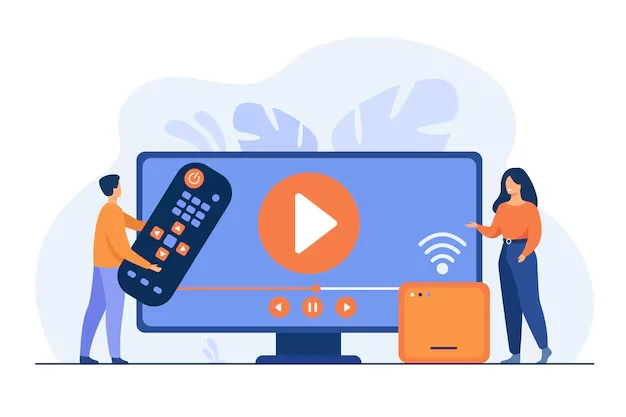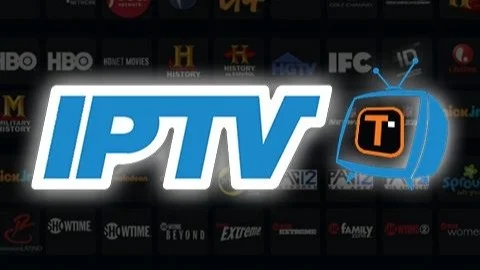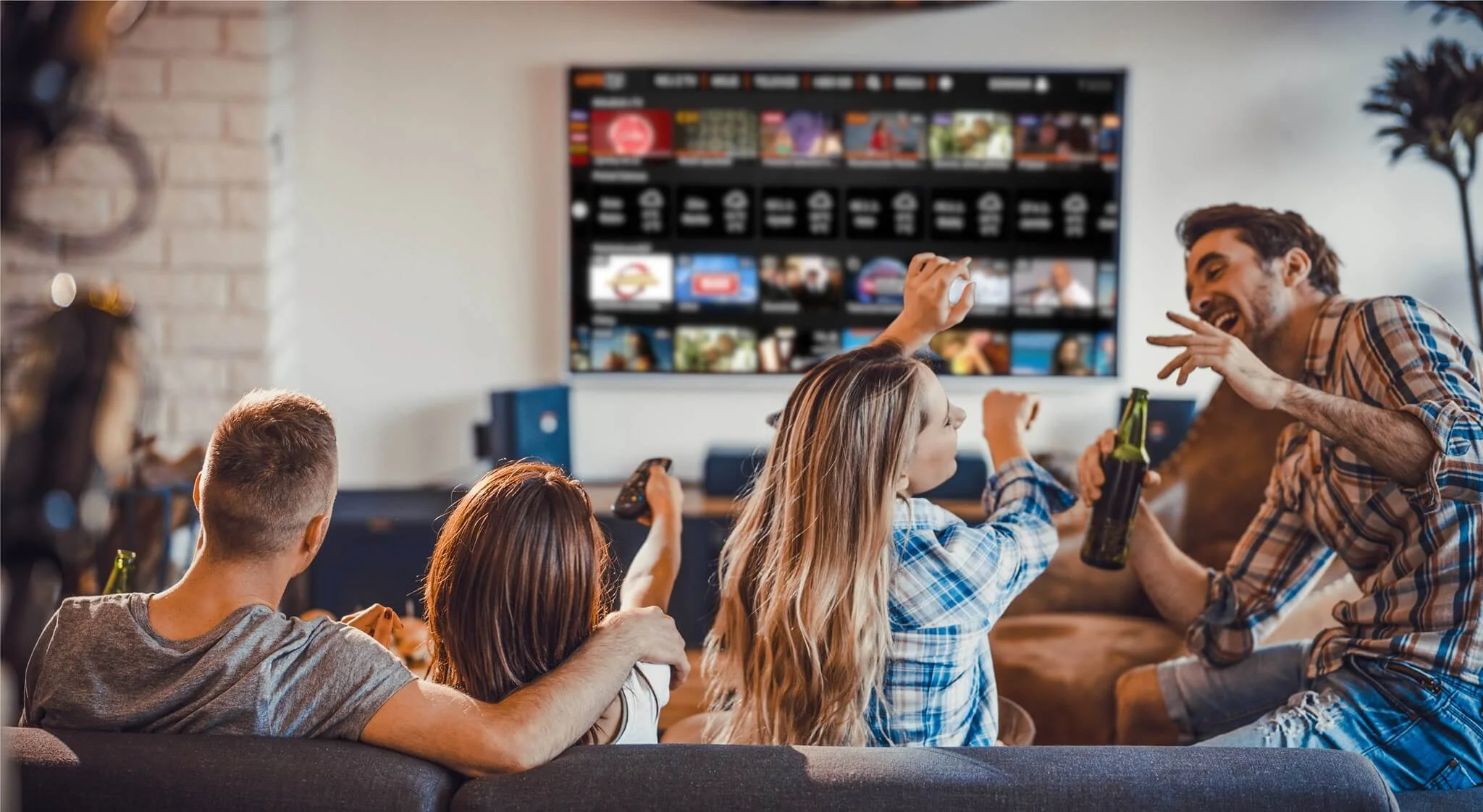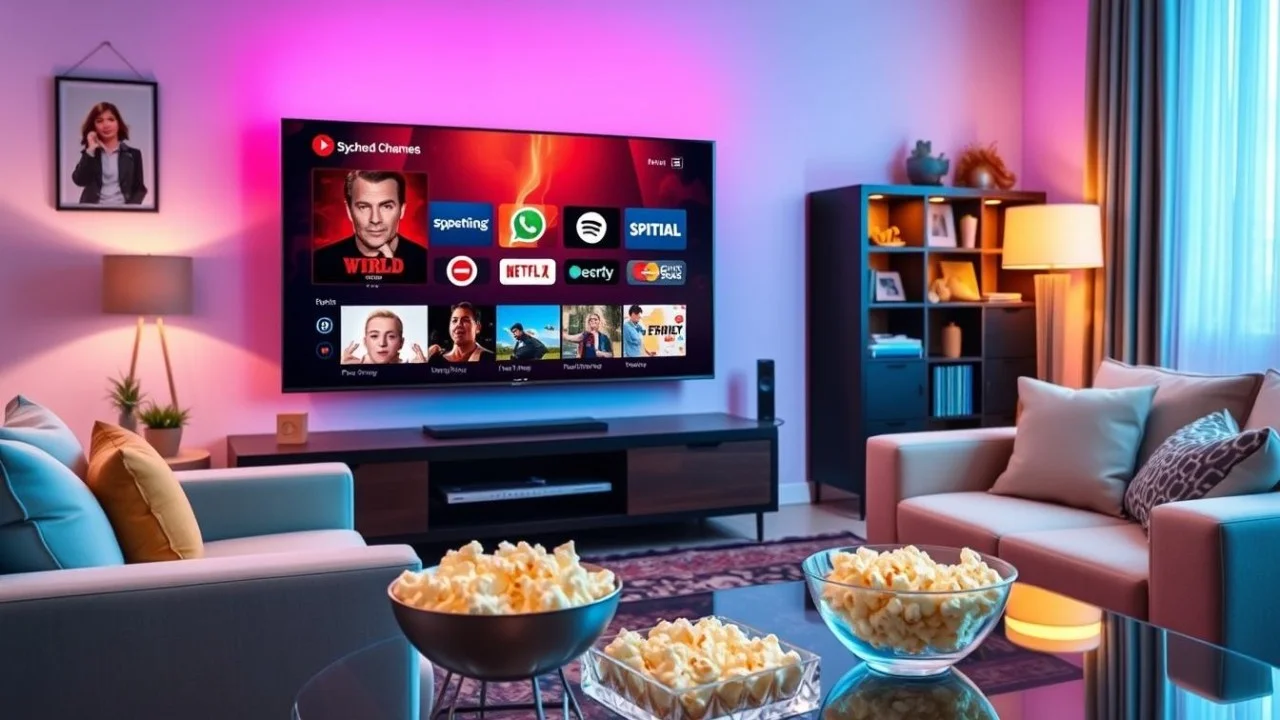Understanding IPTV and the Need for Parental Controls
What exactly is IPTV, and why should parents be thinking about controls? IPTV stands for Internet Protocol Television. Simply put, it’s a way of delivering television content over internet protocol networks instead of traditional terrestrial, satellite signal, or cable television formats. This means you can stream live TV channels, video-on-demand (VOD) content, and more directly through your internet connection. Services like iptv4cheap.com offer access to a vast array of channels from around the world, often at a significantly lower cost than traditional cable packages. This flexibility and affordability make affordable IPTV an increasingly popular choice for home entertainment.
However, this vastness of content brings its own set of challenges, especially for families with children. Unlike traditional TV, where channel lineups are relatively fixed and curated, IPTV services can provide access to thousands, sometimes tens of thousands, of channels and VOD titles. This includes content suitable for all ages, but also potentially material that is inappropriate for younger viewers – think mature themes, violence, strong language, or even adult channels if not properly managed. The sheer volume and the ease of access mean children could stumble upon unsuitable content accidentally or intentionally. This isn’t about restricting exploration entirely, but about creating a safer digital environment where children can enjoy age-appropriate entertainment without unintended exposure. The internet protocol nature means content delivery is less regulated in the traditional sense, placing more responsibility on the end-user – the parents – to manage access. Therefore, understanding and utilizing IPTV parental controls isn’t just a feature; it’s a fundamental aspect of responsible IPTV usage in a family setting. It’s about leveraging the benefits of modern streaming technology while mitigating the potential risks associated with unfiltered access to global media.

The need arises from the core difference between IPTV and older broadcast methods. Cable companies often had basic filtering options, but IPTV’s structure is more akin to the internet itself – wide-ranging and diverse. Children, naturally curious, might browse through extensive channel lists or VOD libraries. Without safeguards, they could easily access news reports with graphic details, horror movies, or shows intended for mature audiences. Furthermore, the integration of IPTV apps on various devices like smartphones, tablets, and Firesticks means access isn’t limited to the family living room TV. Kids might be watching on personal devices, making direct supervision harder. This necessitates proactive measures. Implementing parental controls allows parents to set boundaries, filter content, and ensure that the viewing experience aligns with family values and the child’s developmental stage. It transforms the potentially overwhelming world of IPTV into a manageable and safer space for children’s entertainment and education. Choosing a reliable IPTV service that supports these controls is the first step towards achieving this balance.
Why Are Parental Controls Crucial in the IPTV Era?
The importance of parental controls in the context of IPTV cannot be overstated. We live in an age where digital content is abundant and easily accessible, and while this offers incredible variety and learning opportunities, it also presents significant risks for children. IPTV services, providing access to global television streams and vast video libraries, amplify both the benefits and the dangers. Why is it so critical to use these controls? Firstly, it’s about protecting children from inappropriate content. This is the most obvious reason. Exposure to violence, explicit language, sexual content, or frightening themes can have negative impacts on a child’s emotional and psychological development. IPTV platforms often aggregate channels from various countries and sources, meaning content standards can vary wildly. What’s considered acceptable viewing in one region might be highly inappropriate elsewhere, and certainly not suitable for children. Parental controls act as a necessary filter, shielding young minds from potentially harmful material they aren’t equipped to process. Think about the sheer number of channels available through a typical IPTV subscription plan – manually vetting every single one is impossible.
Secondly, parental controls help manage screen time. Excessive screen time is linked to various issues in children, including sleep problems, obesity, attention difficulties, and reduced social interaction. IPTV, with its endless stream of live channels and on-demand options, can be particularly engrossing. Setting time limits through parental control features encourages a healthier balance between digital entertainment and other activities like homework, outdoor play, and family time. It helps instill discipline and teaches children about moderation from a young age. Without these limits, it’s easy for viewing to spiral, especially when content is available 24/7 across multiple devices. Some IPTV plans even offer multiple connections, meaning different family members can watch simultaneously on different screens, potentially increasing overall household screen time if not managed.

Thirdly, using parental controls fosters digital literacy and responsibility. By setting boundaries and discussing why certain content is restricted, parents open a dialogue with their children about online safety and responsible media consumption. It’s not just about blocking; it’s an opportunity to teach critical thinking about the media they encounter. Explaining the reasons behind the rules helps children understand the potential dangers and learn to make safer choices independently as they grow older. Furthermore, consistent use of controls reinforces family rules and values regarding media consumption. It demonstrates that access to technology comes with responsibilities. In essence, IPTV parental controls are a vital tool for modern parenting, enabling families to navigate the complex digital landscape safely and responsibly. They empower parents to curate a viewing environment that aligns with their child’s age and maturity, protecting them from harm while still allowing them to enjoy the vast entertainment possibilities offered by services like Channels4Cheap.
Exploring Different Types of IPTV Parental Controls
When you decide to implement parental controls on your IPTV service, what options are actually available? Thankfully, most reputable IPTV providers and playback applications offer several layers of protection. Understanding these different types helps you choose the most effective strategy for your family. One of the most common features is PIN Protection. This often works at different levels. You might set a master PIN to access the settings menu itself, preventing children from changing the controls you’ve put in place. More granularly, PINs can often be required to access specific channels, categories of channels (like adult content or movie channels rated above a certain level), or even the entire VOD library. This is a straightforward way to lock down content you deem unsuitable. If a child tries to access a restricted item, they’ll be prompted for the PIN, effectively blocking access without it.
Another key feature is Channel Blocking or Hiding. Instead of just requiring a PIN, some systems allow you to completely hide specific channels or entire channel categories from the electronic program guide (EPG). If a channel isn’t visible, a child is less likely to even know it exists, let alone try to access it. This can be particularly useful for permanently removing access to channels that will never be appropriate, such as adult channels often included in IPTV packages. It declutters the channel list and removes temptation. Many IPTV apps, including popular ones like IPTV Smarters Pro, offer robust category management and hiding features. You can meticulously curate the list of visible channels, creating a personalized, kid-friendly lineup.

Content Filtering based on Age Ratings is another sophisticated control. Where available (often more common in VOD sections), this feature allows parents to set a maximum age rating (e.g., PG, 12+, 15+). The system will then automatically restrict access to any movies or shows rated higher than the set limit. This relies on the accuracy of the metadata provided with the content, but it can be an efficient way to manage large VOD libraries without manually checking every title. Lastly, some platforms or devices offer Time Limits. As discussed earlier, managing screen time is crucial. These controls allow parents to define specific times of day when IPTV access is permitted (e.g., only after homework is done, or not after bedtime) or set a maximum duration for viewing each day. Once the time limit is reached, the app might lock itself or require a PIN to continue watching. The specific features available can depend heavily on both the IPTV service provider and the application you use for playback (like Smarters IPTV APK or others). It’s wise to explore the settings within your chosen app and consult any setup guides provided.
Setting Up Parental Controls: A General Guide (Focus on Apps like IPTV Smarters Pro)
Okay, you understand the ‘why’ and the ‘what’ – but how do you actually set up these parental controls? The specific steps can vary depending on the IPTV application you’re using and the device (like a Firestick, Android box, or smart TV), but the general principles are often similar. Many users access their affordable IPTV subscriptions through popular apps like IPTV Smarters Pro, TiviMate, or provider-specific apps. Let’s focus on the process within an app like IPTV Smarters Pro, as it’s widely used and generally representative.
First, you’ll need to navigate to the settings menu within the app. This is usually represented by a gear icon or found within a main menu. Look for a section specifically labeled “Parental Control,” “Restrictions,” or something similar. Once you find it, the app will typically prompt you to create a parental control PIN. Choose a PIN that your children won’t easily guess (avoid birthdays or simple sequences like 1234). This PIN will be your key to managing and unlocking restricted content later. Make sure you remember it! Write it down securely if needed. After setting the PIN, you’ll usually see the different control options available within that app.
Inside the parental control settings for an app like IPTV Smarters Pro, you’ll likely find options to manage content restrictions. This might include:
- Setting Lock: Require the PIN to access the settings menu itself. This is crucial to prevent kids from disabling the controls.
- Live TV Category Lock: Block entire categories of channels (e.g., “Adult,” “News,” “Movies”). You’ll typically select the categories you want to restrict, and accessing any channel within them will require the PIN.
- VOD Category Lock: Similar to Live TV, but for Video On Demand categories.
- Individual Channel/Movie Lock: Some apps might allow finer control, letting you lock specific items, though managing this for thousands of channels can be tedious. Hiding categories is often more practical.
You might also find options related to age ratings if the app supports it. Follow the on-screen prompts to apply the PIN to the desired categories or settings. For instance, you might toggle a switch next to the “Adult XXX” category and confirm with your PIN. If you’re using a device like an Amazon Fire TV Stick, remember that the device itself might have its own parental control settings (for app purchases, overall usage time, etc.) which work alongside the IPTV app’s controls. Consult the installation guide for IPTV Smarters Pro on Firestick or similar device-specific instructions for comprehensive setup. Always test the controls after setting them up – try accessing a blocked channel or category to ensure the PIN prompt appears as expected. Finding a low-cost IPTV service is great, but ensuring it works with an app that has good parental controls is key for families.

The Limitations of IPTV Parental Controls: What They Can’t Do
While IPTV parental controls are essential tools, it’s equally important to understand their limitations. Relying solely on technological filters without acknowledging their shortcomings can create a false sense of security. What are some of the key limitations parents should be aware of? Firstly, no filter is foolproof. Content categorization relies heavily on the metadata provided by the IPTV service provider. Sometimes, channels or VOD titles might be miscategorized or lack appropriate age ratings. A movie intended for adults might mistakenly appear in a general category, or a seemingly innocuous channel might broadcast inappropriate content late at night. Furthermore, live TV is dynamic; unexpected or sensitive news coverage can appear on channels generally considered safe. Filters primarily work on pre-defined categories and known ratings, they can’t always react perfectly to the unpredictable nature of live broadcasts or errors in content tagging. Relying solely on category blocking might still allow unsuitable content to slip through if it’s placed in the wrong group by the provider.
Secondly, parental controls within one app don’t extend to other apps or the internet browser on the device. If your child is using a smart TV, Firestick, or tablet, they might easily switch from the controlled IPTV app to YouTube, a web browser, or another streaming service where different rules (or no rules) apply. Comprehensive protection requires setting up controls not just within the IPTV app (like IPTV Smarters), but also at the device level (using built-in Android, iOS, or Fire OS parental controls) and potentially even at the network level using router settings or filtering services. The IPTV controls manage access *within that specific service*, not the entire digital environment the child has access to. This highlights the need for a layered security approach rather than relying on a single point of control.

Thirdly, technically savvy children might find ways to bypass controls. They might guess the PIN, observe parents entering it, or even find instructions online for resetting or circumventing restrictions on certain devices or apps. While good PIN practices minimize this risk, it’s not impossible. Moreover, parental controls primarily address *what* content is accessed, not necessarily *how much* time is spent passively consuming even age-appropriate content. While some systems offer time limits, many basic IPTV apps don’t, focusing mainly on content blocking. This means parents still need to actively monitor overall screen time and encourage other activities. Lastly, controls don’t teach discernment. Blocking content prevents exposure but doesn’t inherently teach children *why* something is inappropriate or how to react if they encounter problematic material elsewhere. This underscores the need for ongoing conversations alongside technological solutions. Understanding these limitations helps parents implement controls more effectively and combine them with other strategies for a truly safer viewing experience when they buy an IPTV subscription.
Tips for Making IPTV Parental Controls More Effective
Setting up IPTV parental controls is a great first step, but how can you ensure they are truly effective in protecting your children? It involves more than just enabling a few settings; it requires a thoughtful and ongoing approach. Here are some practical tips to maximize their effectiveness. Firstly, use strong, unpredictable PINs. Avoid easily guessable codes like birthdays, anniversaries, or simple sequences (0000, 1234). Consider using a random number generator or a memorable but non-obvious sequence. Crucially, don’t share the PIN with your children, and be discreet when entering it. If you suspect your child knows the PIN, change it immediately. Regularly updating the PIN adds an extra layer of security. This simple step is fundamental to the integrity of any PIN-based control system used with your cheap IPTV subscription.
Secondly, layer your controls. As mentioned regarding limitations, don’t rely solely on the controls within your IPTV app (like IPTV Smarters Pro APK). Utilize the parental control features available on the viewing device itself – whether it’s a smart TV, Smarters Pro Firestick setup, tablet, or smartphone. These device-level controls can restrict app installations, limit overall screen time, and filter web browsing. Consider network-level controls via your router or a dedicated filtering service for an even broader safety net that covers all connected devices. This multi-layered approach addresses gaps left by individual app controls. Check your IPTV guide or device manual for specific instructions.

Thirdly, regularly review and update settings. IPTV services often update their channel lists and VOD libraries. New channels or categories might appear that need restricting. Periodically check your parental control settings to ensure they still cover all necessary content. Also, review the controls as your children grow older. Restrictions suitable for a young child might be too limiting for a teenager. Adjusting the settings to match their maturity level (while still maintaining appropriate boundaries) makes the controls feel less arbitrary and more respected. Furthermore, stay informed about the app’s features. IPTV apps get updated, sometimes introducing new or improved parental control options. Keep your app updated (check for new versions like Smarters IPTV APK) and occasionally explore the settings menu to see if any useful new features have been added. Finally, and perhaps most importantly, combine technological controls with open communication, which we’ll explore more next. Technology is a tool, not a replacement for parental guidance and conversation about responsible media use. Finding a provider with good IPTV customer service can also be helpful if you encounter issues setting up controls.
Choosing an IPTV Provider with Robust Parental Control Features
Not all IPTV services are created equal, especially when it comes to family-friendly features like parental controls. When you’re looking to buy an IPTV service, particularly for a household with children, it’s crucial to consider the availability and effectiveness of parental controls offered either directly by the service or through compatible applications. So, what should you look for? Firstly, inquire about compatibility with reputable IPTV player apps known for good parental controls. Many providers, including IPTV4Cheap, provide playlists or login details (like an IPTV Smarters URL or M3U/Xtream Codes) that work seamlessly with popular third-party apps like IPTV Smarters Pro, TiviMate, Perfect Player, or others. These apps often have built-in parental control features like PIN locks for settings, category blocking, and sometimes channel hiding. Ensure the provider’s service functions well with these apps, as this is often where the most robust controls reside.
Secondly, check if the provider offers its own dedicated application and, if so, what parental controls are included within it. Some providers develop their own apps for platforms like Android or Firestick. While convenient, these proprietary apps might have varying levels of parental control sophistication. Ask potential providers directly: Does your app include PIN protection? Can I block or hide specific channel categories (especially adult ones)? Can I lock settings? A provider that prioritizes family safety will often highlight these features. Look for clear information on their website or contact their support. A service offering cheap IPTV providers‘ rates doesn’t mean they skimp on essential features, but it’s worth verifying. Check the IPTV pricing and compare features, not just cost.
![]()
Thirdly, consider the quality of channel organization and EPG data. A provider that logically categorizes channels (e.g., separating news, sports, movies, kids, adult) makes it much easier to apply category-based parental controls effectively. If channels are haphazardly grouped, blocking becomes less precise. Accurate Electronic Program Guide (EPG) data is also helpful, though less directly tied to blocking, it helps identify content. Look for providers known for reliable EPG and well-structured channel lists. Reading reviews or asking in user forums can provide insights into this aspect. A provider like Channels4Cheap aims to offer organized and affordable IPTV services. Additionally, consider options for multiple connections. If you plan to use the service on several devices, ensure the parental controls can be managed consistently across them, or set up individually per device profile if the app supports it. Choosing a provider that supports reliable apps like MegaOTT or IPTV Smarters Pro often ensures access to good control features, making your IPTV subscription purchase a safer one for the whole family.
Beyond Technology: Talking to Your Kids About Responsible Viewing
While robust IPTV parental controls are indispensable tools, they represent only one part of the equation for ensuring children’s digital safety and well-being. Technology can block and filter, but it can’t teach understanding, critical thinking, or responsible decision-making. This is where open, ongoing communication with your children becomes paramount. Relying solely on technical barriers without conversation is like building a fence without explaining why the road beyond it might be dangerous. So, how can you effectively talk to your kids about responsible IPTV viewing and online conduct in general?
Start by explaining *why* the controls are in place. Instead of presenting them as arbitrary restrictions (“You can’t watch this because I said so”), frame the conversation around safety and age-appropriateness. Explain that some shows or movies are made for adults and contain themes or images that can be confusing, scary, or upsetting for kids. Relate it to other safety rules they understand, like not talking to strangers or looking both ways before crossing the street. Emphasize that the controls are there to help keep their viewing experience fun and safe, not just to limit them. This helps foster understanding and cooperation rather than resentment. Tailor the explanation to their age; a conversation with a teenager will be different from one with a younger child exploring IPTV channel subscriptions for the first time.

Encourage critical thinking about the content they *do* watch. Ask questions about the shows and movies they enjoy. What did they like? What messages did they take away? Discuss stereotypes, advertising, or different perspectives presented. This helps them become more active, thoughtful viewers rather than passive consumers. Teach them what to do if they accidentally encounter something inappropriate or uncomfortable, whether through the best cheap IPTV service or elsewhere online. Reassure them that they can always come to you without fear of getting in trouble. Knowing they have a safe person to turn to is crucial. Establish clear family rules around screen time – when, where, and for how long devices can be used. Involve older children in setting these rules to give them a sense of ownership. Consistency is key. Ultimately, parental controls are most effective when implemented as part of a broader strategy that includes education, communication, and modeling responsible behavior yourself. It’s about empowering children with the knowledge and skills to navigate the digital world safely, both now and in the future, long after they’ve outgrown the need for PIN codes on their IPTV USA service.